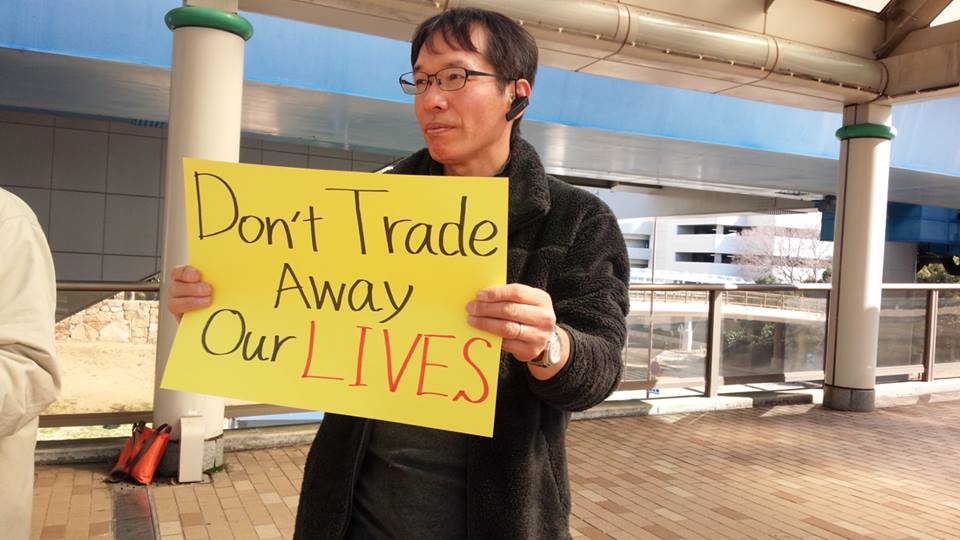Art of the trade deal : China-championed pact faces tricky talks
Bloomberg | 27 February 2017
Art of the trade deal : China-championed pact faces tricky talks
Trade negotiators are under pressure this week to make progress on a blockbuster Asia pact, after Donald Trump pulled the U.S. out of a rival Pacific agreement. But officials meeting in Japan face some significant sticking points.
China is championing the 16-nation Regional Comprehensive Economic Partnership, which does not include the U.S. or Canada. It’s a chance for it to seize the moment amid the U.S. president’s protectionism — evidenced by his withdrawal from the 12-country Trans-Pacific Partnership — keeping free trade on track and boosting its global clout.
Still, some nations are uneasy about rushing to get the RCEP done, even with the failure of the TPP. And while the talks should be simpler — the RCEP is more of a traditional trade deal — there are disputes over tariff cuts and the service sector.
“The stumbling blocks are multiple,” according to Iman Pambagyo, the RCEP trade negotiating committee chief. Pambagyo, who is director-general of international negotiations with Indonesia’s Trade Ministry, said negotiators had only agreed on about 700 of more than 5,000 tariff lines covered in the deal.
‘Speed Over Quality’
The RCEP could help develop supply chains in Asia, according to Japan’s State Minister for Foreign Affairs Kentaro Sonoura.
“This is the first meeting of the year,” he said. “I have strong expectations of progress towards the early conclusion of a high-quality agreement.”
Still, the Japan meeting may only take officials about 30 percent of the way to a deal, said an official involved in the talks. Some countries want to offer different degrees of market access to member nations, but that is not an approach with universal support, said the official, who asked not to be identified because the discussions are private.
For the RCEP, “it depends whether they prioritize speed over quality,” said Yorizumi Watanabe, a former trade negotiator with Japan’s foreign ministry, now a professor at Keio University. “It’s possible RCEP could take over from TPP as the model for future agreements. But if they try to rush, it might be thin.”
The shadow of the TPP will hang over the Kobe meetings. While China pushes the RCEP, some TPP members are calling for that pact to be revived : By proceeding without the U.S., or waiting for Trump to change his mind.
Australia insists the TPP can continue without the U.S. and will seek support for that view in ministerial talks next month in Chile. A spokesperson for Trade Minister Steven Ciobo said negotiations on the RCEP are challenging and significant work remains on market access.
“The seven countries in both the TPP and RCEP are busy scrambling to figure out what to do about TPP with the U.S. withdrawal,” said Deborah Elms, executive director of the Asian Trade Centre, a Singapore-based consultancy. “If TPP does not move forward, it is possible that many TPP provisions will be moved across into RCEP by some members.”
The RCEP was conceived as an expansion of Southeast Asian trade ties with China, India, Australia and Japan. It includes New Zealand and South Korea, which already have free trade pacts with the Association of Southeast Asian Nations. It would cover almost half the world’s population and 30 percent of the global economy.
Asean members “now see RCEP coming into play,” according to Rebecca Fatima Sta Maria, senior policy fellow at the Economic Research Institute for Asean and East Asia and a former secretary-general of Malaysia’s trade ministry.
Sta Maria said there must be a clear timetable and agreement reached in the Kobe meeting on “what aspects must be in for it to be substantially concluded,” if the RCEP has any hope of being ratified this year. “There has to be political will. I think from a political will perspective, I think there is that will.”
Service Sector
The RCEP covers investment, intellectual property and economic and technical cooperation. It would introduce dispute-resolution mechanisms. Unlike the TPP it would not require members to protect labor rights or improve environmental standards. Like the TPP there are big stumbling blocks.
India is arguing for greater liberalization of services, a sector that contributes over 50 percent to its gross domestic product and affects the movement of labor across borders. A particular sticking point is loosening rules to make it easier for its IT workers to move abroad.
Indonesian Trade Minister Enggartiasto Lukita said there’s a stand-off between "India and several other countries" on the issue of a special business travel card.
‘Hard to Do’
“The problem for RCEP is that you are trying to get an agreement with 16 countries in more than a dozen chapters,” Elms said. “That is just hard to do. In particular, you are creating an agreement that will connect the major markets in Asia together for the first time.”
Meanwhile Australia will keep pushing the TPP. Ciobo discussed the idea of China joining a rebooted version of the TPP during a trip to the country last week, and said Monday it would likely be revisited in Chile.
“I’m sure they’ll have a representative there for the discussions,” Ciobo said by phone. “Ultimately it’s a decision for the Chinese authorities what they might choose to do and understandably they would hold off from any decisions until the future of the TPP is more clear.”
Under the terms of the TPP at least 85 percent of the combined gross domestic product of the 12 original signatories must be represented for it to be ratified. Kim Jong-hoon, a former Korean trade minister, said that with the U.S. accounting for about 60 percent of that total, the TPP was “a dead deal”.
According to Indonesia’s Pambagyo, “everyone’s eyes are now looking at RCEP.”
“It’s the only game in town and we have to make sure we work together toward a quality agreement.”






